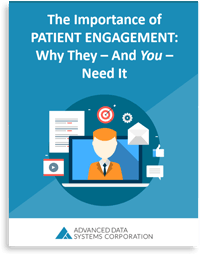Healthcare Blog
The latest in all things RCM, Electronic Health Records, Radiology Information Systems, Practice Management, Medical Billing, Value-Based Care, & Healthcare IT.

By:
Stephen O'Connor
January 21st, 2013
Electronic health records software helps practices organize and track information that relates to specific health concerns related to the foot, ankle and lower extremities. Podiatric medical offices have special requirements and needs that a general medical software package may not provide. Choosing the right Podiatry EHR software solution can reduce costs, eliminate penalties and simplify claim processing.

By:
Stephen O'Connor
January 18th, 2013
ICD-10 and How It Will Benefit You ICD-10 provides multiple benefits for healthcare providers through various categories, including information technology, quality measurement, reimbursement, monitoring, and performance. The coding from ICD-10 can not only provide these benefits, and more, to a variety of healthcare professions, but the upgrades to this unique program can allow the medical software company to more easily make updates in the future to accomodate your growing and changing business.

The Importance of Patient Engagement: Why They - And You - Need It
Learn why patient engagement is a necessity and how you can master it within your practice.

By:
Stephen O'Connor
January 16th, 2013
As a dedicated health professional, you want your focus to be on delivering the best care for your patients. Unfortunately, many behavioral health physicians find themselves split between taking care of patients and keeping track of billing, charts and other critical records. Relying on manual record-keeping can easily result in a tangle of lost or misplaced records, incidences that can cost you time and cause headaches. Having an efficient form of electronic health record-keeping can help solve many of these problems and make your practice more efficient.

By:
Stephen O'Connor
January 14th, 2013
Electronic medical records provide qualified healthcare providers with the means to manage client records efficiently. Currently, The American Recovery and Reinvestment Act of 2009 provides a way for qualified professionals to receive reimbursements on the purchase of EMR software. Practices have until 2014 to reach Stage 2. However, the deadline for meeting Stage 1 implementation has already passed. Your practice may not yet need an EMR software solution, but by investing in the technology now you can take advantage of the incentive programs offered by the government to reduce the cost of adopting this new technology.

By:
Stephen O'Connor
January 11th, 2013
ICD-10 increases the currently used ICD-9 set of diagnoses used to document diagnosis and inpatient procedures. The ICD-9 system has approximately 13,500 codes, while the new ICD-10 protocol provides more accurate and specific recording with almost 70,000 codes. The Centers for Medicare and Medicaid Services has made it very clear, the transition to ICD-10 codes is mandatory for all "covered entities." Covered entities are defined under the Health Insurance Portability and Accountability Act of 1996. The World Health Organization defines and publishes the ICD-10 codes to help track and identify diseases, signs, symptoms and several other aspects related to patient treatment and illness.

By:
Stephen O'Connor
January 9th, 2013
Besides the push by the U.S. government for physicians to start using electronic medical records in their practice, there are several good reasons to make the switch to an all-digital system now. Your practice can become more efficient, stream-lined and earn a reputation for helping your patients by obtaining accurate information regardless of where you are. Modern technology has made it possible to access patient records quickly and securely through a method of paperless automation. You can use a portable device to store years worth of records, and if you lose that device, you can remotely wipe all of the information from your home using an iPad or another mobile device that supports remote access, if necessary. Records will still be available through a secure online customer portal and you don't have to worry about violating the privacy of your patients.

Medical Billing / RCM | Practice Management
By:
Stephen O'Connor
January 7th, 2013
Medical billing software provides increased convenience for providers, less tracking of paperwork and a more streamlined office. Physicians no longer spend valuable administrative time looking for records and retrieving past patients medical records from off-site storage facilities. Medical billing software can save money by avoiding claim denials and avoid the possibility of submitting incorrectly formatted claims.

By:
Stephen O'Connor
January 2nd, 2013
EMR (electronic medical records) software can make your practice more efficient and support your patients in numerous ways. Here are five major reasons to make the transition from paper to EMR.

By:
Stephen O'Connor
December 31st, 2012
Medical practices rely on diagnostic and in-patient procedure codes to properly identify, track and document diagnoses for diseases and injuries, as well as classify signs, symptoms, complains and abnormal findings, among other issues. Thanks to an approaching shortage of assignable medical codes and obsolete terminology, a new set of standards must be placed into effect to better serve healthcare providers, payers and other intermediary organizations.

By:
Stephen O'Connor
December 28th, 2012
The government has made it known that electronic medical records are the wave of the future and they are implementing incentives to make it more attractive for early adopters to secure services now. If your eligible practice begins using medical records software from a valid medical software company, you can receive incentives by meeting the 2015 deadlines for Stage 2 Meaningful Use implementation. Starting the process now ensures that your practice has the time to learn how to use and effectively implement an EMR system to qualify as a "meaningful user" according to the CMS.gov Web site.